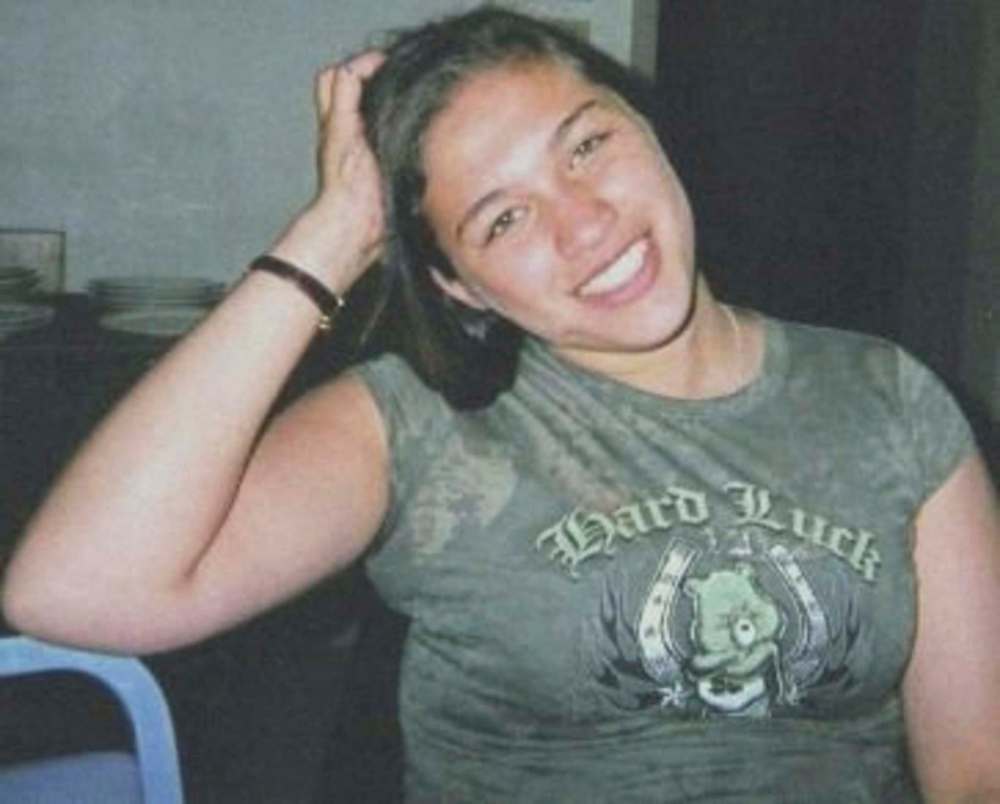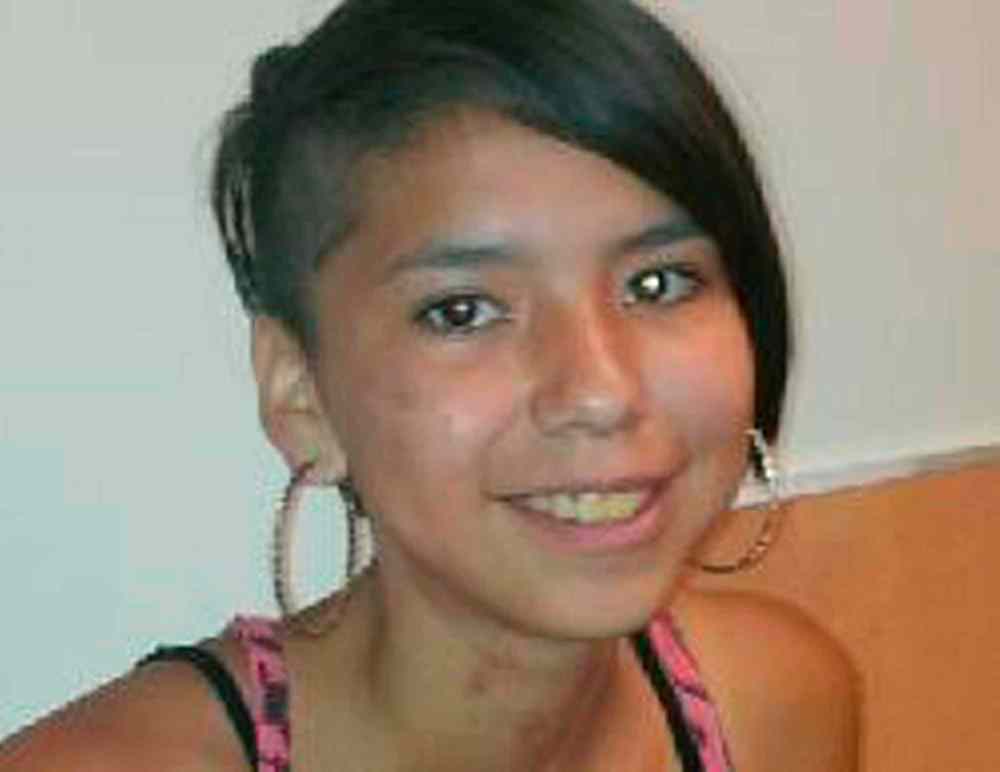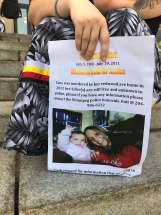Remember their names, tell their stories This city's streets are haunted by memories of missing and murdered Indigenous women and girls
Read this article for free:
or
Already have an account? Log in here »
To continue reading, please subscribe:
Monthly Digital Subscription
$0 for the first 4 weeks*
- Enjoy unlimited reading on winnipegfreepress.com
- Read the E-Edition, our digital replica newspaper
- Access News Break, our award-winning app
- Play interactive puzzles
*No charge for 4 weeks then price increases to the regular rate of $19.00 plus GST every four weeks. Offer available to new and qualified returning subscribers only. Cancel any time.
Monthly Digital Subscription
$4.75/week*
- Enjoy unlimited reading on winnipegfreepress.com
- Read the E-Edition, our digital replica newspaper
- Access News Break, our award-winning app
- Play interactive puzzles
*Billed as $19 plus GST every four weeks. Cancel any time.
To continue reading, please subscribe:
Add Free Press access to your Brandon Sun subscription for only an additional
$1 for the first 4 weeks*
*Your next subscription payment will increase by $1.00 and you will be charged $16.99 plus GST for four weeks. After four weeks, your payment will increase to $23.99 plus GST every four weeks.
Read unlimited articles for free today:
or
Already have an account? Log in here »
Hey there, time traveller!
This article was published 04/10/2021 (1526 days ago), so information in it may no longer be current.
The pay phone Claudette Osborne-Tyo used the night she vanished isn’t there anymore, but the traces of her last steps still linger. There, near the corner of Selkirk Avenue and King Street, is a poster affixed to a street lamp, marking the spot where police say she’s last known to have been.
The poster is half-torn, her photograph faded. But its words still read clear. It tells, in the clipped language of such cases, how she was last seen on the night of July 25, 2008. How she stands five-foot-four, and was wearing black pin-stripe pants, and has a scar on right cheek. It talks about what she’d endured, in her first 21 years.

Then, near the end, in bold letters: “Claudette is very much missed by her family and friends.”
It’s a hot afternoon in early October. Orange leaves crackle in the gutters; black crows cackle from the trees. People pass by the spot where Claudette went missing, passing the tattered remnants of a memorial that clings to the trunk of an old elm: white flowers, red ribbon. Her name and, beside that, a heart made of purple gems.

Stand here and wonder what she saw, that last night she was known to be alive. Stand here and weep for the hurt in this city, that it should swallow up so many Indigenous women and girls. Stand here, and reach for the hope that someday her family will have answers, that someone will come forward to bring Claudette home.
A few steps away, there’s a poster for another young Indigenous woman who went missing last month; in the end, she was found safe. Seven blocks to the west, there’s no sign of the pay phone that Hillary Angel Wilson used on the night of Aug. 19, 2009; her body was found in a field near the Perimeter the next day.

But on all the street lamps nearby, posters ask passersby if they know who killed Cara Lynn Hiebert, who was found dead in her North End basement in 2011. Her death has still not been solved; two years ago, her family and friends walked from the home where she was killed to the steps of the legislature in her memory.
Winnipeg is a city of ghosts, some of them layered on top of the other.
Every year, the list of names grows longer, and the space to tell the old stories shrinks. Fonassa Bruyere was only 17 when she was taken in 2007; her body was found in a field weeks later. Sylvia Guiboche went missing in 2003; her cousin Amber Guiboche disappeared seven years after that. Neither has yet been found.
There is Marilyn Munroe, a 41-year-old mother found dead five years ago in a Pritchard Avenue home, and Tina Fontaine, who broke the whole nation’s heart when she was found in the river. These are just a few of the names that have been lost in the city. They stretch on, their memories haunting the places they were last seen.
The city changes, if slowly. New things are built, old bits are erased. On the night of Feb. 20, 2004, Sunshine Wood stood on Smith Street and held open the door of the St. Regis Hotel; a security camera found her that moment. The 16-year-old was beaming: she looked relaxed, even joyful. She was never heard from again.
The St. Regis Hotel doesn’t exist anymore. It was shuttered in 2017 and finally razed last winter. Its beautiful wood interior was salvaged to live a new life somewhere else; now, of the last place Sunny Wood was seen, all that’s left is a flat expanse of gravel surrounded by a thin wire fence.

The city moves on, but families never can. On Monday, a national day of action and remembrance for missing and murdered Indigenous women and girls, they came together across the province and the country, holding onto their loved ones’ memory, hoping and calling for a future where no other families have to bear the same pain.
The truth is, for so many of those names, someone out there knows something.
But for those of us who do not know what happened to those who were killed, and those who were taken, all we can do is know their names and share their stories. All we can do is pause as we pass by the places they were last seen alive, and offer a prayer or a thought to those who loved them, and those who are still searching.
Winnipeg is a city of ghosts, and yet it goes on living. Seasons turn and leaves fall on the places where the women went missing. Their names linger on, faded posters marking a grim sort of cartography: a map of sorrow, and of the places the city is most hurting. One day, with love, maybe there will be no need for new posters to replace them.
melissa.martin@freepress.mb.ca
Our newsroom depends on a growing audience of readers to power our journalism. If you are not a paid reader, please consider becoming a subscriber.
Our newsroom depends on its audience of readers to power our journalism. Thank you for your support.









